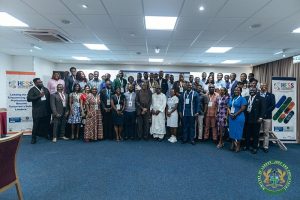The Federal Government of Nigeria’s promise to subsidize electricity costs for hospitals and educational institutions remains unfulfilled a year after its announcement, leaving these crucial sectors grappling with mounting debt. In August 2024, then-Minister of Power, Adebayo Adelabu, pledged government support to alleviate the financial burden of increased electricity tariffs, particularly for institutions categorized under Band A, which guarantees at least 20 hours of daily power supply. This commitment followed a tariff hike that saw electricity bills for these institutions triple, jeopardizing their operational capacity. Despite assurances that the government would cover a portion of their bills, no action has been taken, leaving hospitals and universities struggling to meet their financial obligations.
The silence from the government regarding the promised subsidy has drawn criticism and skepticism. Consumer advocacy groups allege that the initial announcement by Minister Adelabu lacked the necessary approval from the Federal Executive Council, raising concerns that the promise was merely a political gesture without genuine intent for implementation. This perceived inaction further fuels distrust in government pronouncements and adds to the list of unfulfilled promises across various sectors. Industry sources suggest that the government may not be actively considering any form of subsidy at present, further deepening the uncertainty surrounding the issue.
The financial strain caused by high electricity costs is acutely felt by affected institutions. Some tertiary hospitals reportedly pay up to N300 million monthly for electricity, a dramatic increase from the pre-tariff review figure of less than N100 million. This financial burden impacts operational expenses and potentially compromises the quality of services provided. Officials within these institutions, speaking anonymously for fear of reprisal, confirm the government’s failure to implement the subsidy, expressing concern about the long-term consequences of this inaction. They urge the government to reconsider its position and prioritize the financial stability of these essential sectors.
The feasibility and sustainability of the proposed subsidy have been questioned by experts. Professor Dayo Ayoade, an energy expert at the University of Lagos, acknowledges the potential benefits of subsidizing electricity for hospitals and universities but highlights the challenges of targeted implementation and the risk of abuse. He raises crucial questions regarding the disbursement of funds: would the money be given directly to the institutions or to the distribution companies? The absence of a clear and sustainable plan likely contributes to the government’s hesitancy to implement the subsidy. Professor Ayoade suggests exploring alternative solutions, such as solar power installations, to reduce reliance on the grid and ensure long-term energy security for these institutions.
While the initial promise of direct electricity subsidies appears to have been abandoned, the government is reportedly pursuing alternative strategies to address the energy needs of hospitals and universities. Minister Adelabu’s media aide, Bolaji Tunji, points to a program coordinated by the Rural Electrification Agency (REA) focused on deploying renewable energy solutions. This initiative involves installing solar power systems in various institutions, including the University of Maiduguri, University of Calabar, and several others, with varying capacities. The REA program also encompasses infrastructure rehabilitation and training initiatives, signaling a shift towards sustainable energy solutions rather than direct financial subsidies.
The shift in focus from direct subsidies to renewable energy projects suggests a reevaluation of the government’s approach. While the initial promise offered immediate financial relief, the government may have deemed it unsustainable in the long run, given the mounting costs of existing electricity subsidies and the potential for abuse. The REA program, while requiring significant upfront investment, offers a more sustainable long-term solution by reducing reliance on the grid and promoting clean energy. However, the transition to renewable energy takes time, leaving institutions to grapple with high electricity costs in the interim. The government’s commitment to ensuring the financial stability and operational capacity of these crucial sectors remains a critical challenge.














